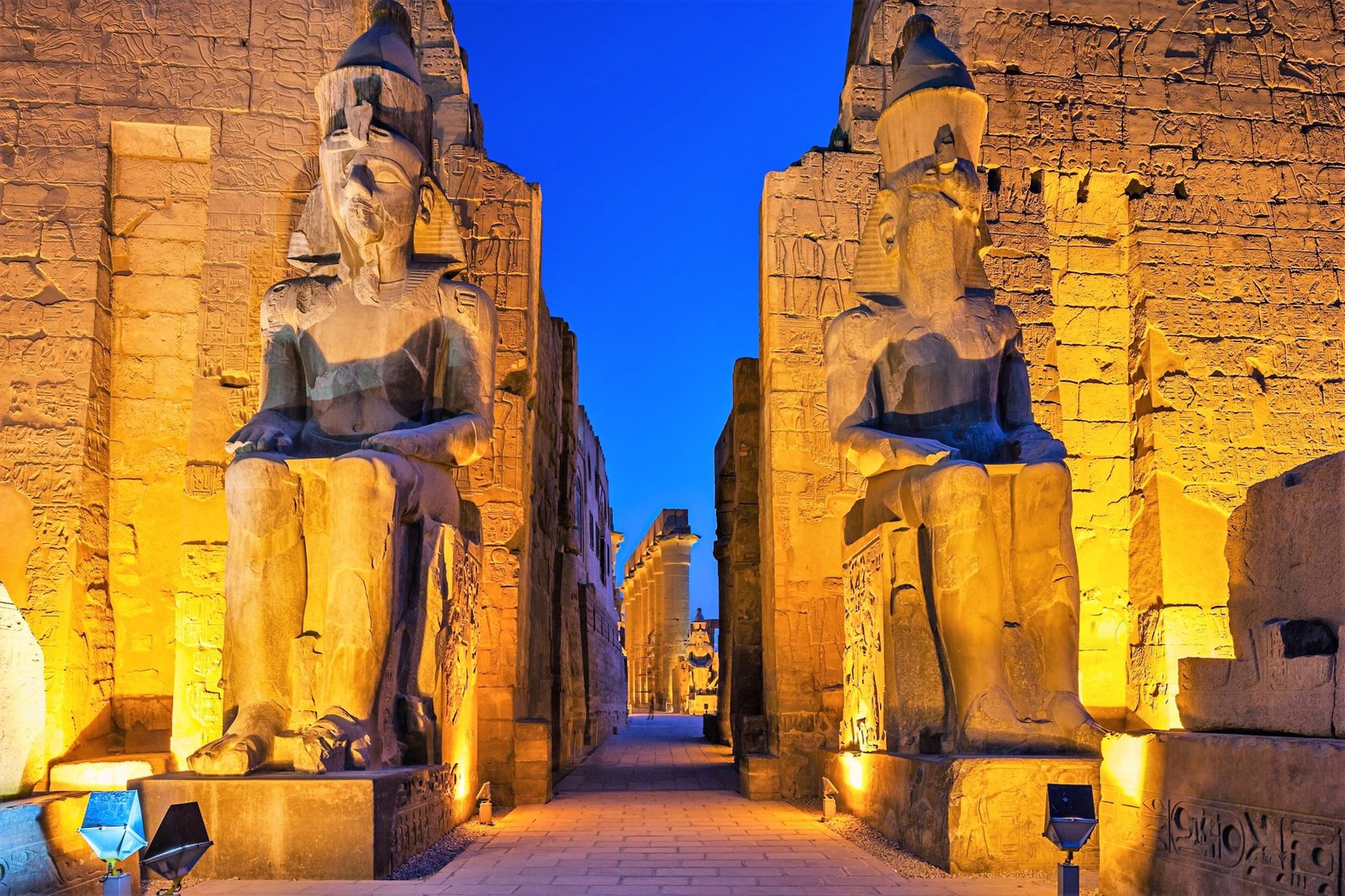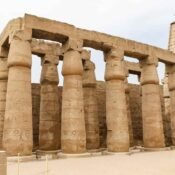
Luxor temple
Where exactly is the Luxor Temple?
Luxor Temple is one of the best still intact and is situated on the east bank of the Nile in Luxor, southern Egypt. The Luxor Temple, a breathtakingly exquisite monument in the center of contemporary Luxor, is a representation of ancient Egyptian culture.
It’s contrast to other Luxor temples, was devoted to the revival of kingship rather than to the worship of gods and divine representations of kings and pharaohs.
It’s possible that several kings were crowned at the Luxor Temple. He asserted that he had been crowned at Luxor, as Alexander the Great had been, in reality or metaphorically.
Ipet Resyt, which in Egyptian means Southern Sanctuary, is the name given to the Luxor Temple. Its primary purpose was to support the yearly Opet Festival. Amun, Mut, and Khonsu statues were brought here during the inundation from the Karnak Temple along Sphinx Street.
Who constructed the Temple?
One of ancient Egypt’s greatest master builders, Pharaoh Amenhotep III, constructed Luxor during the New Kingdom (1390–1352 BC), Tutankhamun (1336-27 BC), and Horemheb (1323-1295 BC). The temple was built by you, and it is now complete. Ramesse II (1279-13 BC).
Ramesses II probably ordered numerous constructions during his lengthy rule, with the Luxor Temple being only one of them. Ramesses II also used several ancient monuments for new purposes to further his fame. The majority of the statues and sculptures that adorn the temple now are Ramesses II’s creations.
What substance makes up the Luxor Temple?
The sandstone used to construct the Temple. The adobe walls that enclose the temple stand in for the division between the outside world and the divine realm. Many similar design elements were used in the construction of New Kingdom temples. Ity has numerous characteristics of New Kingdom temple design.
Recent Posts
Luxor day tour: Most Illuminated Temples
Discover Luxury Nile Cruises
Designing the Perfect Itinerary for Your Nile Cruise




